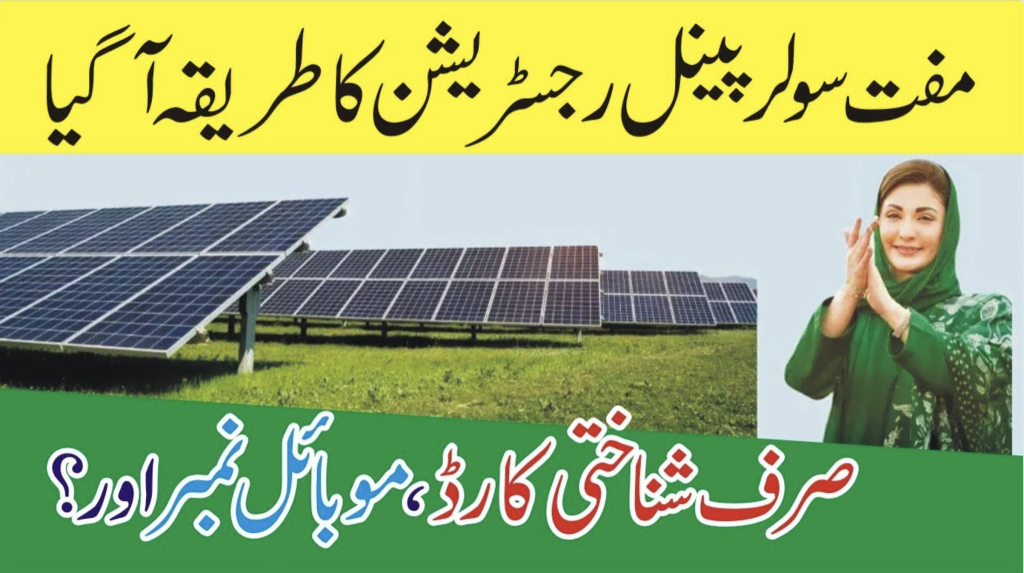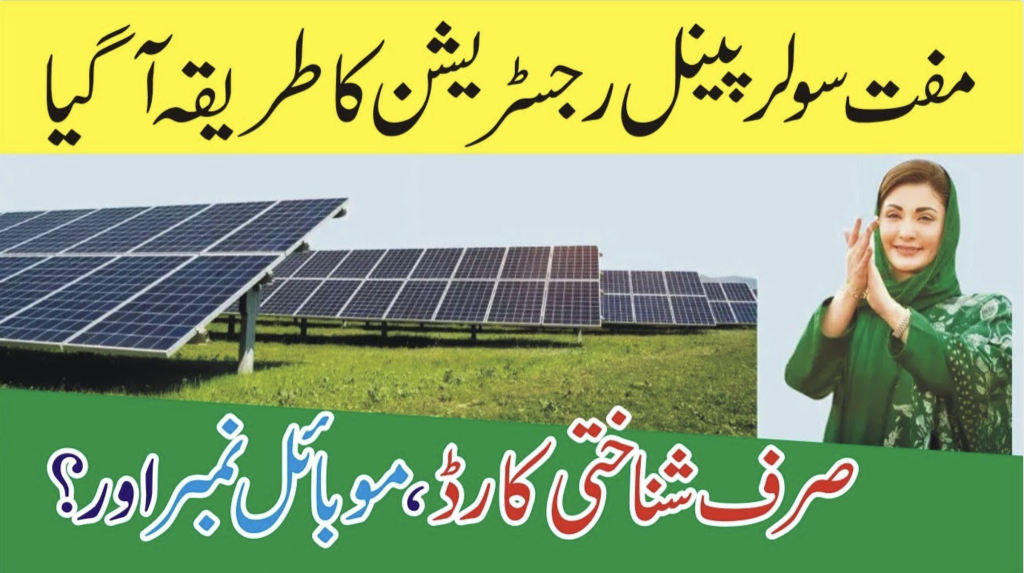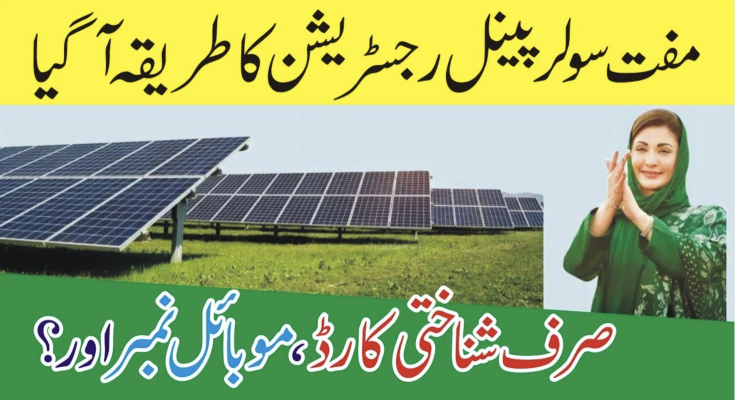The prospect of switching to solar energy is an appealing one for homeowners who want to save money on electricity and contribute to a more sustainable world. However, the high upfront cost of purchasing and installing solar panels often deters many from making the transition. While it’s rare to find truly “free” solar panels, there are numerous programs, incentives, and creative strategies available to significantly reduce or eliminate the initial costs. Gov Solar Panel Scheme Online Registration
In this article, we’ll take a deep dive into the various ways you can access solar power at little to no cost. Whether through government incentives, leasing programs, or nonprofit initiatives, there are numerous pathways to make solar energy more affordable, and in some cases, effectively free.
1. Federal and State Incentives: Making Solar Affordable
One of the most powerful ways to reduce the cost of installing solar panels is by taking advantage of government incentives at both the federal and state levels. These programs are designed to encourage the adoption of solar energy by reducing the financial burden on homeowners and businesses.
Federal Solar Tax Credit (ITC)
In the United States, the Federal Investment Tax Credit (ITC) is one of the most significant programs that helps reduce the cost of solar panel installation. With this program, you can claim a 30% tax credit on the total cost of your solar panel system, including installation. This means that if your solar system costs $15,000, you could potentially save $4,500 on your taxes, making the investment more affordable.

While this isn’t “free” solar, it makes the transition to solar much more accessible by reducing the amount of money you have to pay upfront. It’s an opportunity to receive immediate financial relief in the form of tax savings, which can then be put towards other costs associated with the solar installation or other home improvements.
State-Level Incentives and Rebates
Many states offer their own set of incentives and rebates for residential solar installations. Depending on where you live, you could be eligible for additional savings that can lower the cost of solar even further. For example:
- California offers the California Solar Initiative and SGIP (Self-Generation Incentive Program), which provide incentives for both residential and commercial solar installations.
- New York has programs like NY-Sun that offer rebates that help homeowners significantly offset the cost of solar panels, sometimes covering a substantial portion of the installation cost.
- Colorado and Massachusetts also offer their own generous incentives to encourage the use of renewable energy.
By researching the incentives in your state, you can find rebates, tax credits, and other opportunities that will help make solar energy more affordable.
2. Solar Power Purchase Agreements (PPAs) and Solar Leasing
Another option for homeowners who want to adopt solar energy but lack the funds for upfront payment is through Solar Power Purchase Agreements (PPAs) or solar leases. These programs allow you to install solar panels on your home at no upfront cost, with payments structured over time.
Solar Power Purchase Agreements (PPAs)
With a PPA, a third-party company installs and owns the solar panels on your roof. Instead of purchasing the system outright, you enter into an agreement to buy the electricity generated by the panels at a predetermined rate, typically lower than what you would pay your utility company. In exchange for using the power generated by the system, you pay a monthly fee based on your energy usage.
The advantage of a PPA is that you don’t need to come up with the upfront cost of installing solar panels, and you don’t need to worry about maintenance or system upkeep. The company handling the installation will be responsible for maintenance and monitoring, allowing you to enjoy the benefits of solar energy without dealing with the technicalities.
Solar Leasing
Solar leasing works similarly to PPAs, but instead of paying for the electricity, you pay a fixed monthly fee for the use of the solar panels. This can be a great option for homeowners who want to save on electricity bills without having to own the solar system.
While you won’t benefit from tax credits or incentives as you would with outright ownership, your monthly payments can still result in substantial savings compared to traditional electricity rates. However, it’s essential to fully understand the terms of a solar lease before committing, as long-term contracts can sometimes come with hidden fees or price hikes.
3. Non-Profit Organizations and Charitable Solar Programs
Some charitable organizations and non-profits are dedicated to making solar energy accessible to low-income families and communities. These organizations often collaborate with solar companies, government agencies, and volunteers to offer free or significantly discounted solar installations.
Grid Alternatives: Bringing Solar to Low-Income Households
One of the most well-known non-profits in this field is Grid Alternatives. This organization provides free solar installations to low-income households across the United States. Through partnerships with government programs and donations, Grid Alternatives offers the installation of solar panels to qualified homeowners at no cost or at a significantly reduced rate.
Grid Alternatives operates primarily in communities that would otherwise be unable to afford the initial investment in solar energy. They also provide job training and volunteer opportunities, which means that the solar installations are often completed by community members, adding an additional layer of engagement and social impact to the initiative.
Solar United Neighbors: Collective Buying Power
Another non-profit organization worth mentioning is Solar United Neighbors, which helps organize solar co-ops. These co-ops bring together homeowners in the same area who are interested in going solar. By banding together and purchasing solar panels as a group, co-op members can take advantage of bulk discounts and other financial incentives.

In addition to the cost savings, Solar United Neighbors also provides guidance on navigating local incentives and grants. While this program may not always provide solar panels for “free,” it significantly reduces the cost through collective purchasing power.
4. Crowdfunding Your Solar Project
For some homeowners, the upfront cost of solar panels may still be too steep even with the incentives and programs available. In these cases, crowdfunding may provide a viable alternative.
Websites like GoFundMe and Kickstarter allow individuals to create campaigns to raise money for specific goals, including funding solar panel installations. Crowdfunding can be particularly effective if you can articulate the environmental, financial, and social benefits of your solar installation to potential donors. Friends, family, and even strangers who are passionate about renewable energy may be willing to contribute to help you achieve your goal.
Crowdfunding is not a guaranteed way to get free solar panels, but it can certainly offset the cost, and in some cases, may result in enough funds to cover the entire installation.
5. DIY Solar Kits: A Low-Cost Option for the Handy Homeowner
For the adventurous and handy homeowner, DIY solar panel kits offer a way to cut down on installation costs. While these kits are not free, they are often much more affordable than professional installations, especially if you’re willing to handle the physical labor yourself.
DIY solar kits typically include all the necessary components—solar panels, wiring, and mounting equipment—but you’ll need some technical expertise to properly install the system. While this option won’t necessarily provide “free” solar panels, it offers a significant reduction in costs compared to hiring a solar company for a full installation. You’ll also have the satisfaction of knowing you played a hands-on role in your transition to renewable energy.
6. What’s the Catch? Understanding the Costs and Commitments
Though there are many ways to reduce the cost of solar panels, it’s important to recognize that most programs that offer solar for free or at a reduced price still involve some form of cost or commitment. Whether through long-term payment plans, third-party ownership, or the need for volunteers, there are often trade-offs.
Always be sure to read the fine print and evaluate the long-term costs versus the immediate benefits. In some cases, a “free” solar system may not end up being as beneficial in the long run as an outright purchase.
Conclusion
While the idea of getting free solar panels may sound too good to be true, the reality is that there are plenty of opportunities to drastically reduce the upfront cost of solar energy. Whether through tax credits, solar leasing programs, nonprofit organizations, or crowdfunding, there are many creative ways to make solar more affordable.
Apply Now
For homeowners who are committed to embracing renewable energy, the combination of these programs can often make solar installation much more accessible, sometimes even with little or no initial out-of-pocket cost. By exploring all the available options, you can take advantage of these opportunities and begin generating clean, sustainable energy for your home without the financial burden typically associated with going solar.
